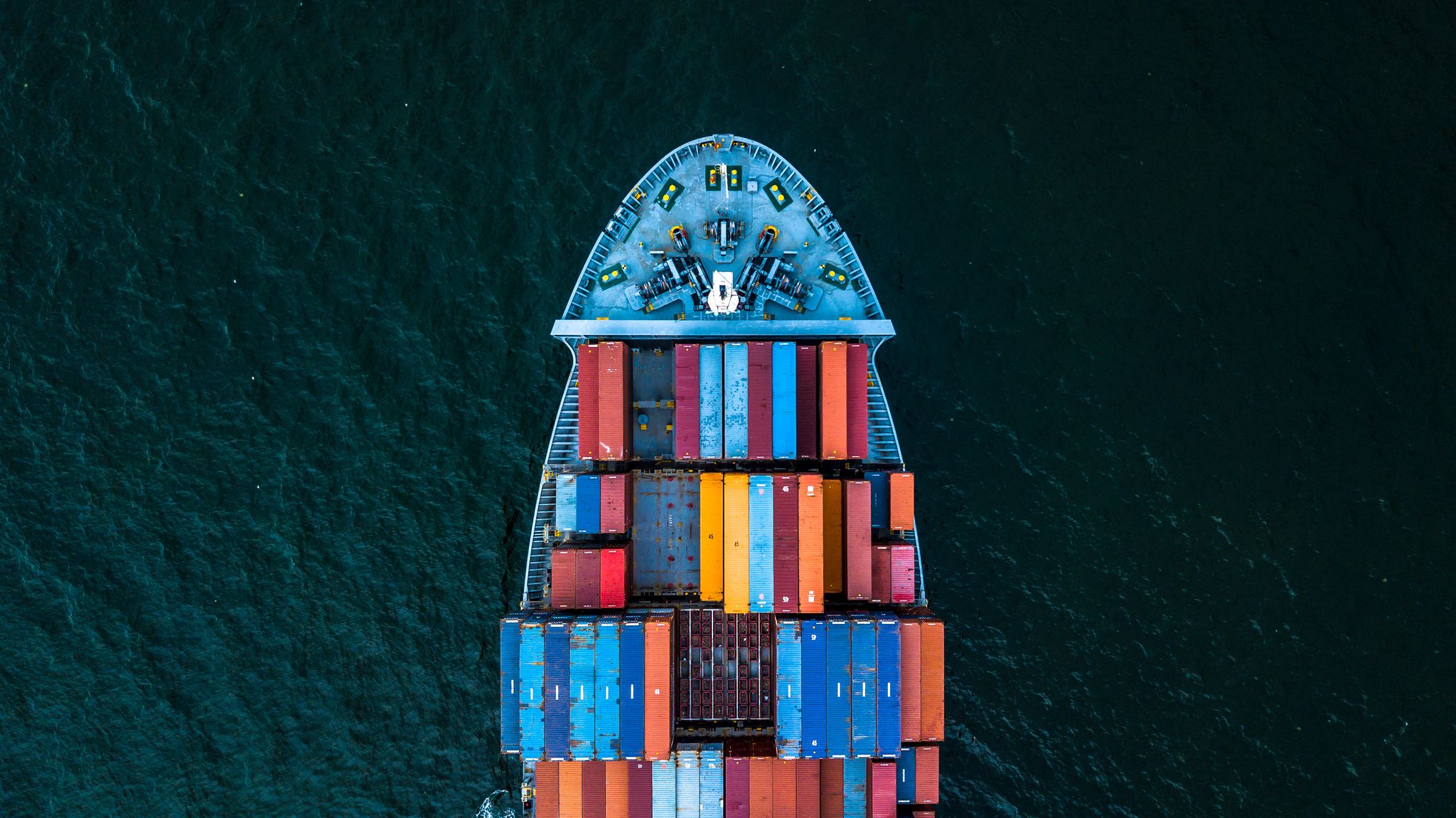
3 Emerging Trends Reshaping Port Operations for Risk Managers
By Alliant Specialty / November 07, 2025
This article appears in the November 2025 edition of In The Public Eye Newsletter
Listen to the audio version:
Ports are under pressure – environmental mandates, shifting labor relations and geopolitical tensions are causing a wave of transformation at ports across the United States. This article breaks down three trends impacting risk at ports and what they mean for port risk management.
Ship-to-Shore Power Adoption
When a ship docks at a port, the ship will usually keep their diesel engines running to power lighting, refrigeration, crew quarters and other systems. This practice contributes significantly to local air pollution by emitting greenhouse gases that go right into densely populated port communities.
In response, the federal government is encouraging ports to implement shore power infrastructure. Shore power infrastructure enables vessels to turn off their engines and plug into the local electricity grid to power onboard systems while at the berth. The Inflation Reduction Act of 2022 provided the EPA $3 billion to fund zero-emission port equipment and infrastructure, including shore power infrastructure.
Several ports have made significant progress. On October 29, 2024, Port of Los Angeles was awarded a $412 million EPA grant, which will help equip additional AMP vaults. The port expects to reach zero-emission terminal operations by 2030 with shore power infrastructure and other environmental improvements. Port of Oakland, Port of San Diego, Stockton Port District, Connecticut Port Authority, Georgia Ports Authority and the Ports of New York and New Jersey are among the ports benefiting from EPA grants to implement vessel shore power.3
Risk managers are keen to consider ship-to-shore power not only because it reduces regulatory risk and protects the environment, but also because it reduces business interruption risk and fire risk. Eliminating engine usage while docked means less wear and tear on ship systems, which can improve ship performance and reduce unplanned maintenance and downtime of ships at the berth. In turn, shore power infrastructure can be viewed as lower risk for business interruption insurance. Secondly, by turning off diesel generators, ports eliminate a primary cause of fires. Additionally, by having fewer onboard fuel operations, there is a lower risk for fuel leaks and combustion-related incidents. Ultimately, we understand insurable values can vary considerably for this infrastructure, and welcome conversations with our clients about properly scheduling these assets to reflect insurable exposures.
Longshoremen Strikes and Labor Disruptions
Longshoremen, workers who help load and unload ships at ports, are part of a union called International Longshoremen’s Association (representing about 85,000 workers). They most recently went on strike in October 2024 over concerns regarding financial compensation, automation leading to layoffs and a lack of skills-based training. While the strike led to a 62% raise for longshoremen, automation remains a flashpoint.
The automation debate is ongoing, and missteps have and will continue to reignite labor unrest. As U.S. ports are behind global peers in automation, the pressure to modernize is growing.
Risk managers should be keen to anticipate disruptions, protect operations and support long-term planning. First and foremost, it is vital to track union negotiations, automation-related disputes and contract expiration dates. Second, it is also important to evaluate insurance market availability of business interruption for when strikes threaten to cease port operations. A strong model for the financial impact of a labor disruption should be created, including automation resistance, partial shutdown and full shutdown financial impact due to strikes.
Concerns over Chinese-Made Cranes
Since the mid-1990s, ship-to-shore cranes have been predominately produced by Chinese crane manufacturers, and over the past 20 years, Zhenhua Heavy Industries Company (ZPMC) has come to be the dominate Chinese manufacturer, producing 70% of cranes globally and 80% of cranes in the U.S. In September 2024, the House Committee on Homeland Security and the Select Committee on the Chinese Communist Party (CCP) released a scathing investigative report revealing that ZPMC cranes have embedded technology that could allow the CCP to remotely gain access to ZPMC manufactured cranes. Alarmingly, the CCP may be able to access sensitive data or disrupt operations. Even when control software is sourced from trusted vendors in the aftermarket, the original software may still pose a risk to cybersecurity vulnerabilities.
ZPMC cranes are not currently being subject to a U.S. tariff of 100%, but they are a primary target of an Office of the U.S. Trade Representative (USTR) proposal to impose 100% tariffs on ZMPC cranes. A public hearing on the proposal was held on May 19, 2025, and the final decision is pending further discussion.6 While the U.S. Federal Government has directed a $20 billion dollar investment towards maritime security and domestic crane manufacturing, the tariffs are still a huge concern for ports.
Before the threat of tariffs, a ZPMC crane would cost $15 million dollars. Current tariffs and inflationary pressures have drastically increased the cost of cranes. Taken together, if the full 100% tariffs are implemented, U.S. ports could face an additional $6.7 billion dollars in costs. The Port of Houston, for example, has eight ZPMC cranes on order for delivery in 2026. If the full tariff goes into effect, the port will owe an additional $302.4 million in fees.
In the face of uncertainty, risk managers would be keen to analyze current exposure to Chinese manufactured cranes and strengthen cybersecurity protocols. It is important to strategically consider assets exposed to software vulnerability and update crane asset valuations to reflect potential tariff-induced price increases within each port’s statement of values. In coordination with their broker, risk managers should review existing cyber insurance policies to ensure they cover third-person software vulnerabilities, business interruptions due to cyber attacks on cranes and remote access sabotage risks.
How Alliant Public Entity Can Support Port Risk Management
Alliant Public Entity brings extensive experience helping ports navigate emerging trends by reassessing insurance coverage and supporting continuity planning in the event of a disaster. As a trusted partner in reaching our clients’ port risk management objectives, our team of specialists works closely with port risk managers and leverages a robust network of A-rated insurance carriers to proactively mitigate exposure. Through personalized risk management strategies like cybersecurity improvements and ongoing labor forecasting and asset valuation, ports can better adapt to today’s evolving threats and regulatory shifts.
Contact a representative from Alliant Public Entity today to safeguard your port’s financial future.
Alliant note and disclaimer: This document is designed to provide general information and guidance. Please note that prior to implementation your legal counsel should review all details or policy information. Alliant Insurance Services does not provide legal advice or legal opinions. If a legal opinion is needed, please seek the services of your own legal advisor or ask Alliant Insurance Services for a referral. This document is provided on an “as is” basis without any warranty of any kind. Alliant Insurance Services disclaims any liability for any loss or damage from reliance on this document.
News & Resources




